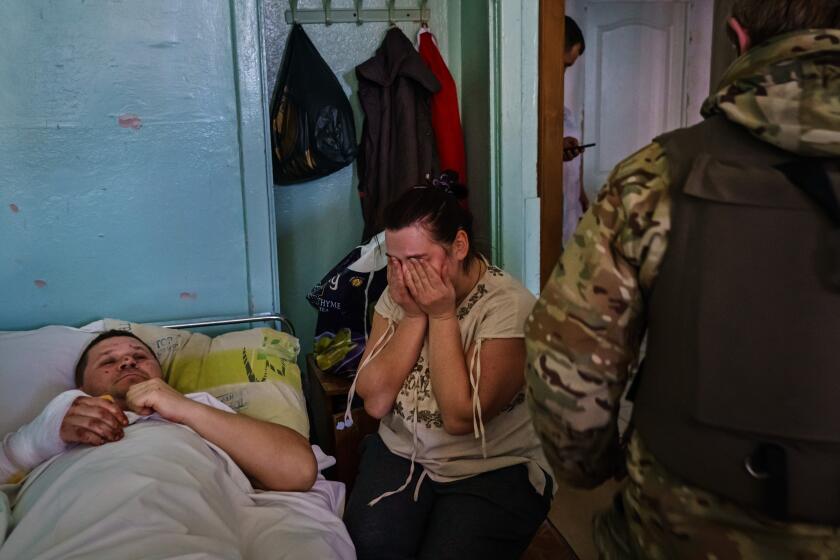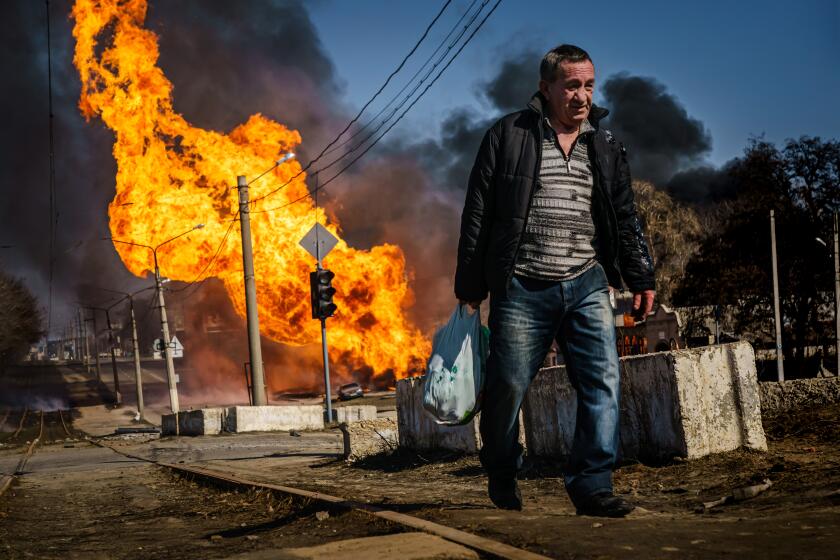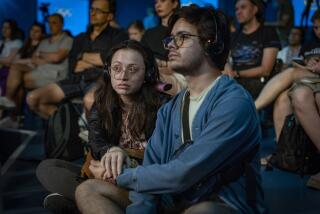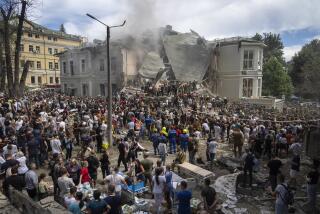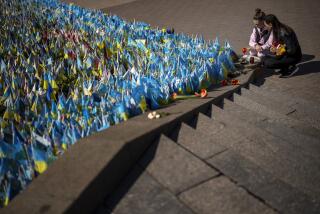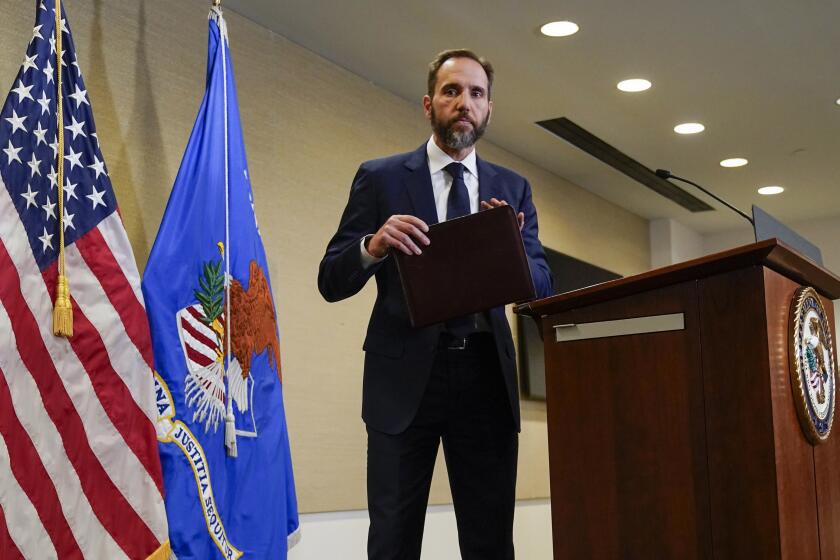Op-Ed: Watching bombs fall on Kyiv, the place I used to call home
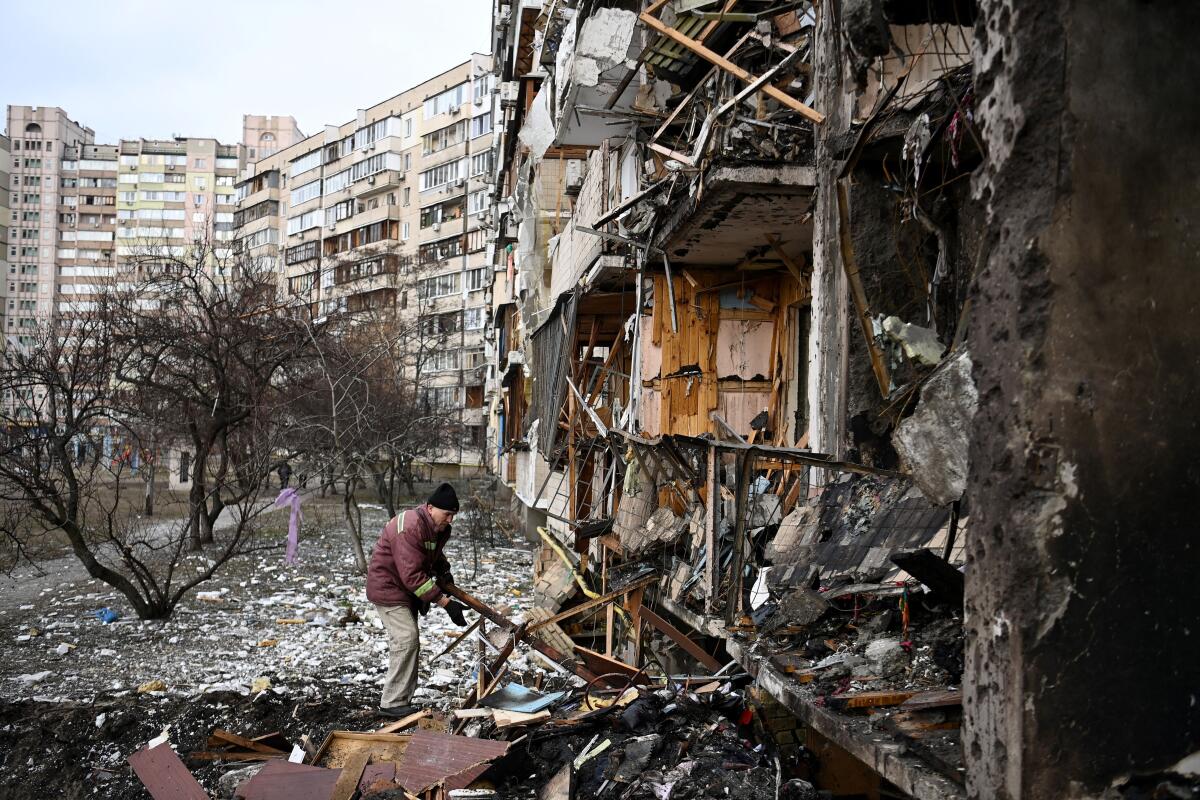
As the Russian invasion moves in on Kyiv, Ukraine’s capital, bombs are hitting close to the places I once called home. When I first heard that a missile struck a TV tower close to Babyn Yar in Kyiv, I thought: “That used to be my park.” Because of this attack, more people know that Babyn Yar was where the Nazis built a concentration camp, then murdered 33,000 Jews in just two days. For me, the site is a symbol of both the Holocaust and my childhood in Ukraine.
I spent the first 10 years of my life in Kyiv. When my mother and I moved to the Syrets neighborhood, the grassy parkland that included Babyn Yar became my playground. There, I made friends and forced my mom to read aloud to me for hours. My parents had their wedding pictures taken in the park, shortly after a monument was erected, with the commemoration: “To Soviet citizens and POWs shot by the Nazi occupiers.” It didn’t specifically highlight Jewish death. For my parents, the photos were a way to honor murdered Jews against erasure and to infuse our culture into their wedding when public shows of Jewishness could still come with costs.
When we left Ukraine in 1993, we had months to pack but we didn’t take a lot of photos. Today’s refugees have so little time to think of what to carry as they flee. Because my family brought barely any mementos, retained few connections and hasn’t returned, Ukraine has largely lived inside of our minds. The longer that we stayed away, the more nostalgia shaped our memories, taking out the sting of what pushed us out, though not erasing it. The Kyiv that existed just before this war was not the Kyiv that we left. But there’s a difference between knowing cities change with time and seeing them reduced to rubble. The current war, with its destruction of my childhood haunts, has felt more personally violent, more traumatic than I had anticipated.
Officials assess grim toll at Mariupol maternity hospital after Russian and Ukrainian officials fail to make progress after meeting in Turkey.
I came to California as a child. The more that I assimilated, the more I told people that I was Russian. It was my native language and, unlike Russia, Ukraine meant little to Americans. Plus, it took too long to explain Soviet policies surrounding language and identity — how one could be Jewish, Ukrainian-born and Russian-speaking. Being Jewish, I never called myself Ukrainian even as I planned to return and walk the cobblestone streets of Kyiv’s Andriyivskyy Descent, the street we strolled so often. After Russia’s 2014 annexation of Crimea, I started saying more and more that I was “from Ukraine,” as much a sign of solidarity as a reaction to Americans’ greater awareness of a place they still called “the Ukraine.”
My trauma from the current war is not the trauma of the people digging city trenches and escaping bombs. It is the trauma of an emigrant who feels both far away and close. One night, before sleeping, I saw footage of a tank rolling through a city street flanked with what are known in the West as “Soviet bloc” buildings. The caption said this was Kyiv’s Obolon district, where my school was and where my maternal grandparents and my uncle lived. My mom and dad had joined them there after getting married and some years all six of us had shared the three rooms and one bathroom. Now there’s news of shelling on residential buildings in Obolon.
Meanwhile, a reported strike in the Podil neighborhood on Monday damaged people’s homes. To me Podil was where my great-aunt lived and cooked us special meals until she left for Canada. It’s also where I attended synagogue, where I celebrated my first seder and found the “afikomen,” the piece of matzo hidden as a ritual.
“Before and after” images are flooding social media. I’m constantly confronted with intact buildings and their bombed-out skeletons, clean sidewalks now filled with rubble, bustling streets turned quiet, empty. There is a video like this of Khreschatyk, Kyiv’s main street, where my mom grew up and where we went by tram to buy our favorite bread.
The images have made me call my mother. She takes the news in smaller gulps than me, but like other immigrants in San Francisco, she feels the war. While on the phone, I open Google Maps to check distances between different sites, how close that Kyiv tower is to where we used to live.
The Times’ Marcus Yam, no stranger to war photography, gives a first-person account from Ukraine.
My mother never wanted to leave Kyiv. Like many emigrants, she felt she could endure the hardships, but she didn’t want me to. She joked for years that she’d retire in Odesa, the famous Black Sea city. But the jokes have stopped, the very thought of homecoming seeming impossible.
Some posts on social media say the destruction is only temporary because Ukraine will be rebuilt, made even better. The EU and Britain have pledged to help. It is surreal to see this level of support. I’m heartened that the people who survive may have the space to live and re-create community. But I also wish the same enthusiasm and material support was regularly directed to other places suffering from war and occupation, such as Gaza.
The longer that this war goes on, the harder it will be for the millions of refugees to go home again. And for those killed, there is no physical return, only the kind of haunting that one feels in Babyn Yar when remembering that green grass can cover up mass graves. I hope as we continue to bear witness, we see how much can’t be restored, rebuilt, made whole again.
Maggie Levantovskaya is a writer and teaches at Santa Clara University.
More to Read
A cure for the common opinion
Get thought-provoking perspectives with our weekly newsletter.
You may occasionally receive promotional content from the Los Angeles Times.
